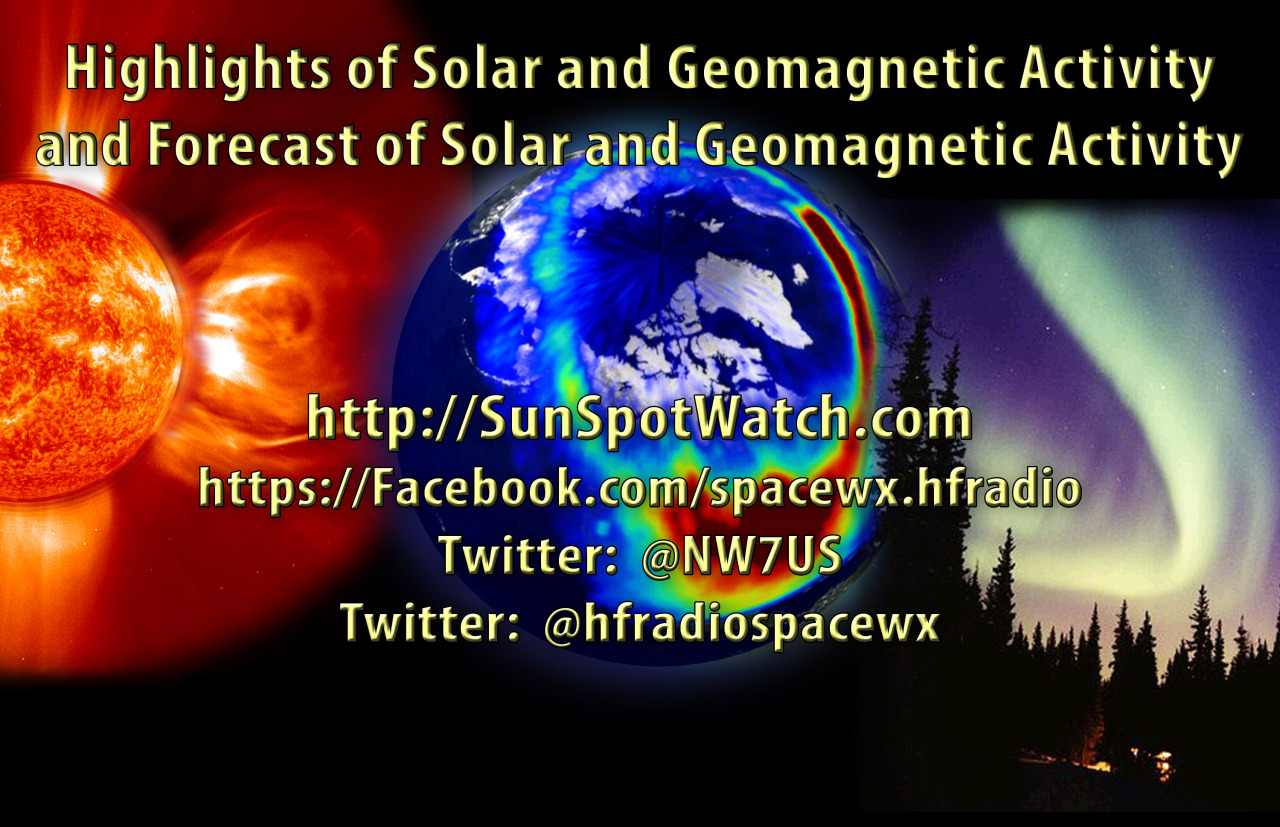 Weekly Propagation Summary – 2015 Jul 13 16:10 UTC
Weekly Propagation Summary – 2015 Jul 13 16:10 UTC
Here is this week’s space weather and geophysical report, issued 2015 Jul 13 0408 UTC.
Highlights of Solar and Geomagnetic Activity 06 – 12 July 2015
Solar activity began at moderate levels. Region 2381 (N14, L=074, class/area Eko/550 on 08 Jul) produced a pair of M-class flares on 06 Jul; an M1/Sn at 06/0844 UTC and an M1/2n at 06/2040 UTC. Activity was low from 07-11 Jul. Region 2381 produced the majority of the low level C-class flares from 07-09 Jul while Region 2385 (N08, L=106, class/area Dao/110 on 11 Jul) produced the C-class flares on 10-11 Jul. Solar activity decreased to very low levels on 12 Jul. Several filament eruptions were observed throughout the week but none of them were on the Sun-Earth line.
No proton events were observed at geosynchronous orbit.
The greater than 2 MeV electron flux at geosynchronous orbit was at normal to moderate levels for the majority of the period with the exception of 09-10 Jul when high levels were reached due to effects from a coronal hole high speed stream (CH HSS).
Geomagnetic field activity began the week at active levels due to effects from a waning CH HSS on 06 Jul. Mostly quiet conditions were observed from 07-09 Jul with the exception of isolated unsettled periods on 07 and 09 Jul. Activity increased to active to minor storm levels from 10-11 Jul due to effects from a recurrent positive polarity CH HSS. Quiet to unsettled conditions finished out the period on 12 Jul as CH HSS effects began to subside.
Forecast of Solar and Geomagnetic Activity 13 July – 08 August 2015
Solar activity is expected to be at very low levels with a chance for C-class flares and a slight chance for M-class flares from 13-15 Jul. Very low to low activity is expected from 16-26 Jul after Region 2381 rotates around the west limb. Activity is expected to increase to low levels with a chance for M-class flares for the remainder of the period as old Region 2378 (S15, L=084) and Region 2381 return to the visible disk.
No proton events are expected at geosynchronous orbit.
The greater than 2 MeV electron flux at geosynchronous orbit is expected to be at normal to moderate levels on 13 Jul. Moderate to high levels are expected from 14-17 Jul following CH HSS effects. Normal to moderate levels are expected to return from 18 Jul-02 Aug. Moderate to high levels are expected again from 03-05 Aug followed by a return to normal to moderate levels from 06-08 Aug.
Geomagnetic field activity is expected to be at quiet to unsettled levels on 13-14 Jul due to residual CH HSS effects. Mostly quiet conditions are expected from 15-30 Jul. Quiet to active levels are expected from 31 Jul-02 Aug with minor storm levels expected on 01 Aug due to a recurrent negative polarity CH HSS. Mostly quiet conditions are expected to return from 03-05 Aug. Active to minor storm conditions are expected from 06-07 Aug due to a positive polarity CH HSS followed by quiet to unsettled conditions on 08 Aug as effects subside.
Don’t forget to visit our live space weather and radio propagation web site, at: http://SunSpotWatch.com/
Live Aurora mapping is at http://aurora.sunspotwatch.com/
If you are on Twitter, please follow these two users: + https://Twitter.com/NW7US + https://Twitter.com/hfradiospacewx
Get the space weather and radio propagation self-study course, today. Visit http://nw7us.us/swc for the latest sale and for more information!
Check out the stunning view of our Sun in action, as seen during the last five years with the Solar Dynamics Observatory (SDO): https://www.youtube.com/watch?v=zXN-MdoGM9g
We’re on Facebook: http://NW7US.us/swhfr














